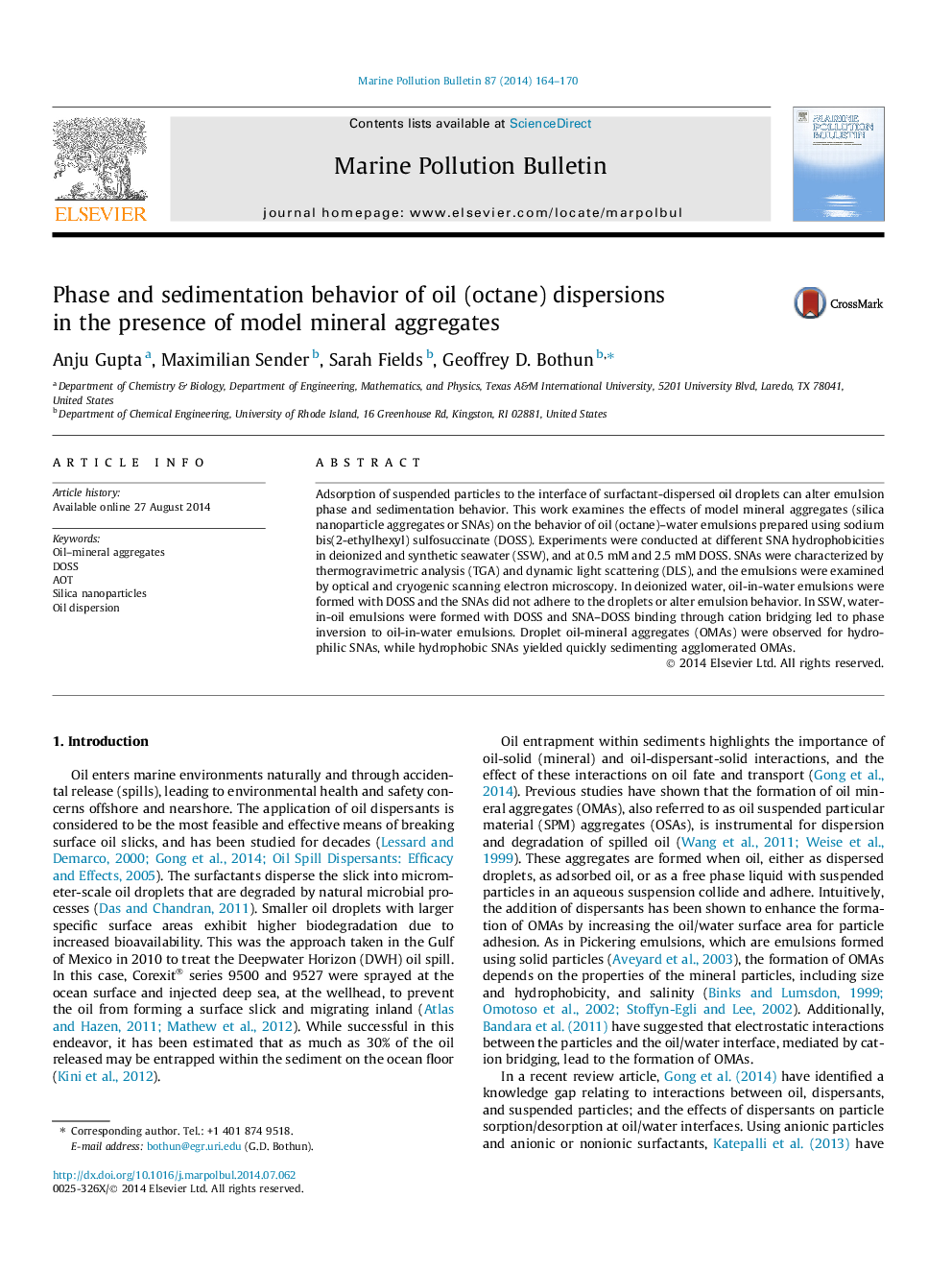| Article ID | Journal | Published Year | Pages | File Type |
|---|---|---|---|---|
| 6357638 | Marine Pollution Bulletin | 2014 | 7 Pages |
â¢Droplet and agglomerate OMAs formed by via particle-DOSS binding in seawater.â¢Divalent cations promote binding of like-charged particles and DOSS.â¢OMAs sedimentation prevalent and increases with increasing particle hydrophobicity.
Adsorption of suspended particles to the interface of surfactant-dispersed oil droplets can alter emulsion phase and sedimentation behavior. This work examines the effects of model mineral aggregates (silica nanoparticle aggregates or SNAs) on the behavior of oil (octane)-water emulsions prepared using sodium bis(2-ethylhexyl) sulfosuccinate (DOSS). Experiments were conducted at different SNA hydrophobicities in deionized and synthetic seawater (SSW), and at 0.5Â mM and 2.5Â mM DOSS. SNAs were characterized by thermogravimetric analysis (TGA) and dynamic light scattering (DLS), and the emulsions were examined by optical and cryogenic scanning electron microscopy. In deionized water, oil-in-water emulsions were formed with DOSS and the SNAs did not adhere to the droplets or alter emulsion behavior. In SSW, water-in-oil emulsions were formed with DOSS and SNA-DOSS binding through cation bridging led to phase inversion to oil-in-water emulsions. Droplet oil-mineral aggregates (OMAs) were observed for hydrophilic SNAs, while hydrophobic SNAs yielded quickly sedimenting agglomerated OMAs.
Graphical abstractDownload high-res image (76KB)Download full-size image
